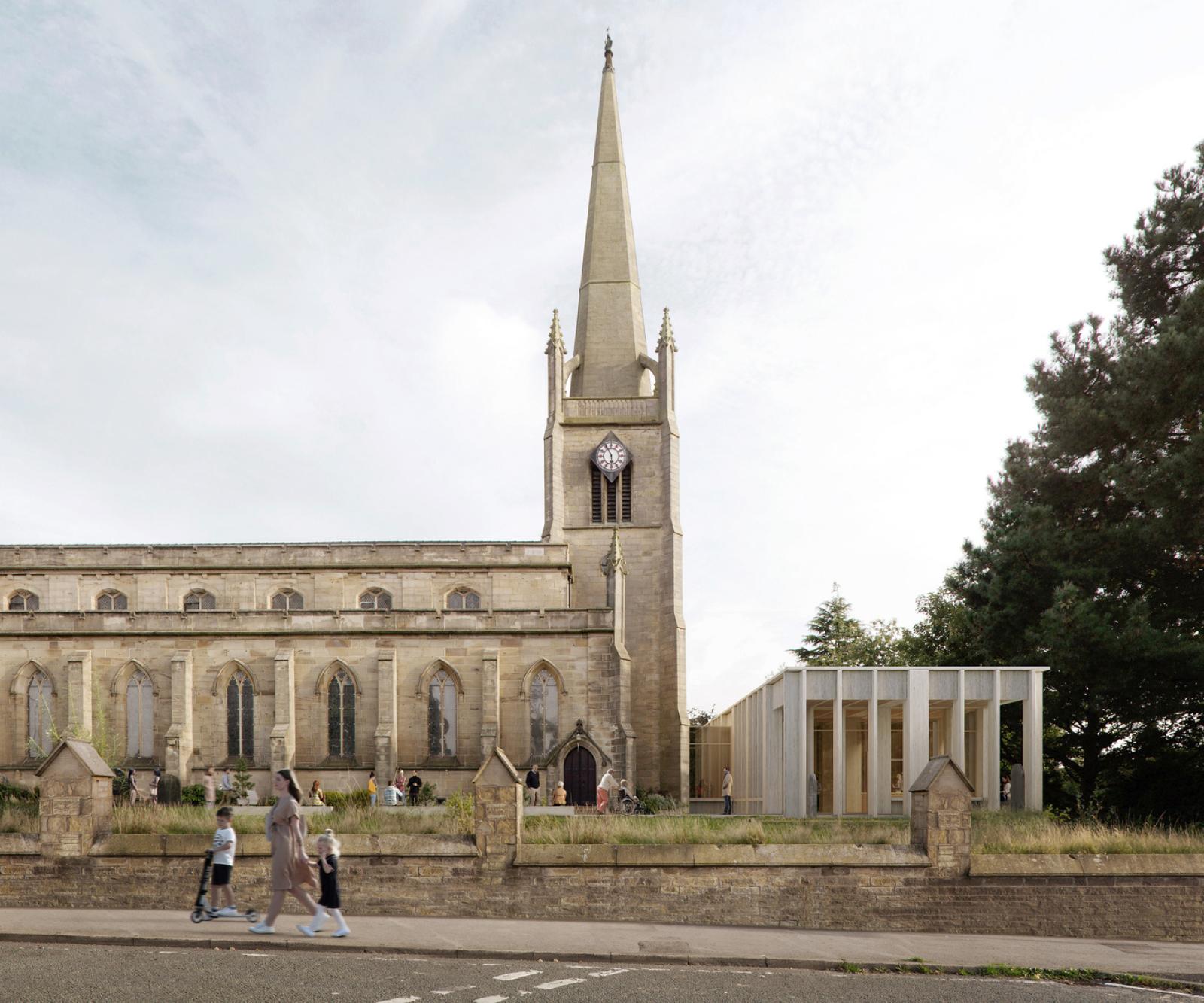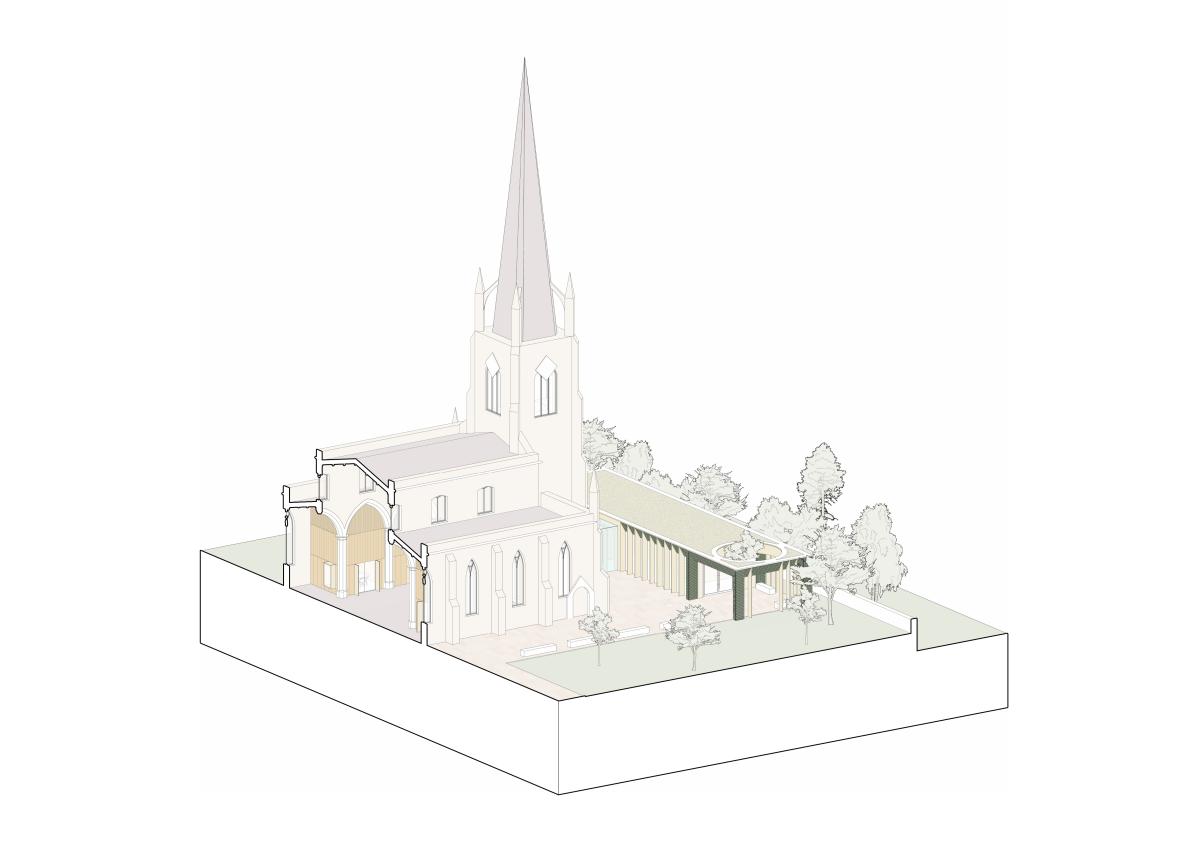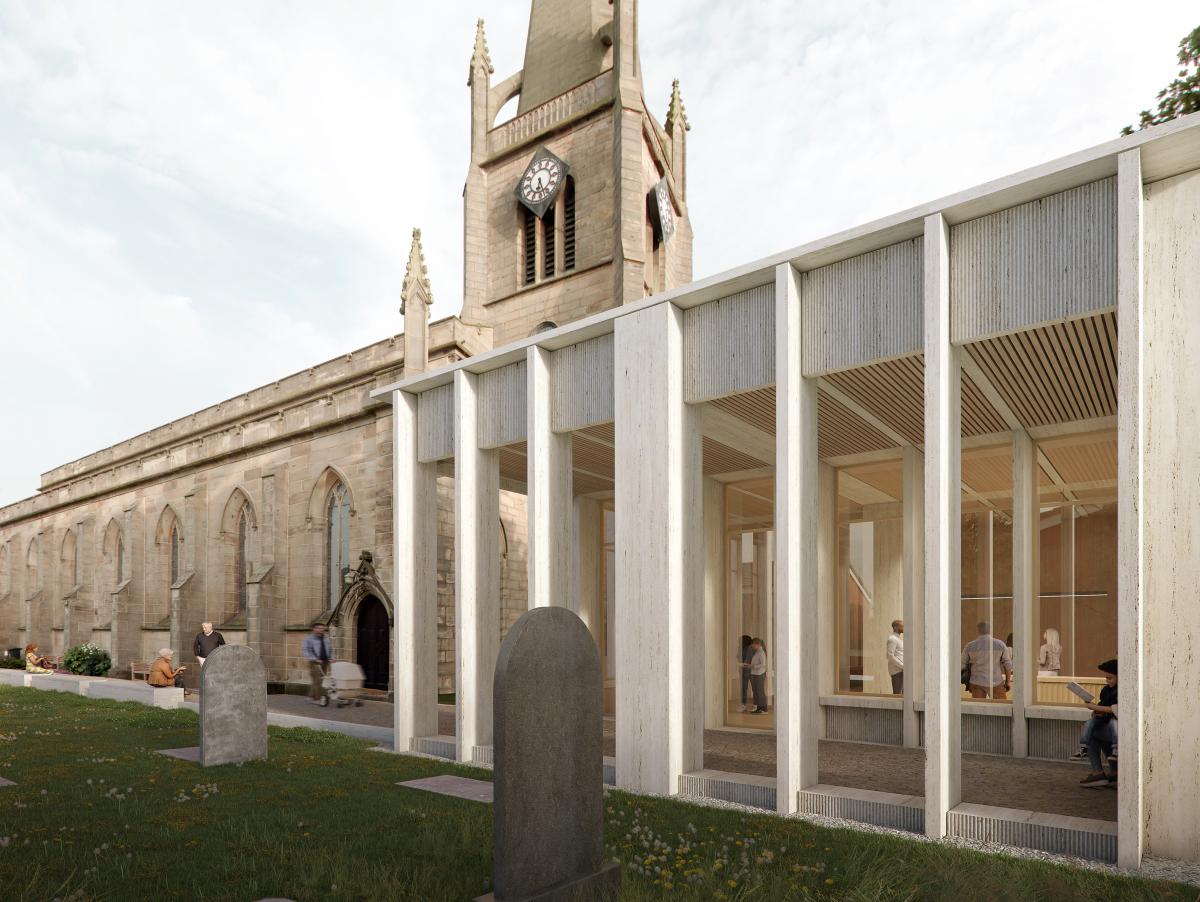
An exploration of the evolution of St George’s Church in Tyldesley, Greater Manchester, celebrating its potential as a place of worship and centre for community life.
Recognising its potential to be more inclusive, welcoming, and adaptable, the leadership of grade II listed St George's sought to explore how the building could evolve and better serve its congregation and community.
Our feasibility study explores options for internal reordering, extension and wider site landscaping that unlock under-utilised spaces both internally and externally and further enhance the church's community offering as a shared, accessible and inclusive space.

Extending the story
We are passionate about helping historic buildings remain relevant and resilient.
At the heart of this project is a desire to make St George’s more open, inclusive, and deeply rooted in its community. The client’s vision is not simply about adapting a historic building but about enabling it to respond to contemporary life, becoming a place that serves both spiritual and everyday needs with equal generosity.
Re-framing the experience
Our feasibility study explored how the church and its wider site could be transformed through sensitive yet purposeful design. Central to this vision is the idea of connection. Connection between the church and its neighbourhood, between heritage and modernity, and between sacred and shared space. The proposals respond by enhancing the sense of arrival, improving physical and perceptual accessibility, and encouraging greater public use of the site.
Internally, we reimagine the nave and surrounding spaces as flexible environments able to support both worship and community gatherings. Externally, a new garden pavilion provides much-needed space for performance, celebration and social activity. A transparent, welcoming structure that opens the church grounds to wider use. Together, these interventions reframe how the site is experienced, inviting new patterns of use while respecting the church’s history and architectural significance.

First impressions
The existing arrival sequence at St George’s lacks clarity, unintentionally reinforcing the idea that the church is not a space for all. Our proposals introduce a contemporary garden pavilion that redefines the journey into the site, enhancing both visibility and legibility for visitors.
This new structure offers vital, accessible communal space for events, performances, exhibitions and social gatherings; a response to the increasing scarcity of local public venues.

Sensitive, sustainable design approaches
Our approach champions natural materials, low-embodied carbon strategies, and traditional construction methods to reduce long-term maintenance and environmental impact.
The garden pavilion complements the existing building in form and proportion while remaining distinctly contemporary in detail. Located to preserve the prominence of the church’s principal north façade, the extension supports the liturgical hierarchy and architectural order of the site.
Internal re-ordering
Within the church, the removal of fixed pews and the introduction of key amenity spaces enables greater adaptability. The nave can now be reconfigured to suit both liturgical and community functions, offering a space that is spiritually resonant and practically versatile.
All proposed interventions are designed to be reversible and respectful of the historic building fabric, allowing the church to evolve while preserving its significance.


image credits
CGIs by Not Just Yellow
Edward Kepczyk
Edward specialises in the conservation, informed repair, and creative reuse of secular and ecclesiastical buildings, including some of the country’s most significant historic sites.
Courtnay Ives
Courtnay is an architect whose experience includes a range of specialisms with heritage, ecclesiastic and non-secular schemes.
Cameron Hawkins
Cameron works on a number of significant historic building projects in the practice, alongside leading the work experience programme within the Manchester studio.
Cameron is particularly interested in sustainable design and environmental policy. During his master’s degree, he produced a thesis critically examining the global race to net zero at all scales of enquiry.


